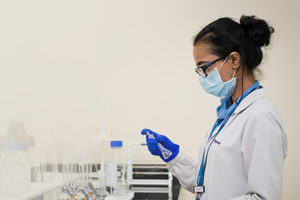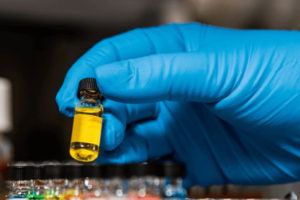Introduction

Q3: With the success of PROTACs in early clinical trials, how do you foresee the broader market for these therapies evolving over the next five years?
Kenneth’s Answer: The global PROTAC market is poised to grow exponentially, with estimates suggesting it could reach $10 billion by 2028. Oncology will continue to be a key area of focus, but we are also seeing growing interest in neurodegenerative diseases and autoimmune disorders. Syngene is ahead of the curve, having already built strong partnerships with several biotech and pharma companies, enabling us to scale our efforts and target new diseases with the protein degradation technology. More recently, we are seeing an expansion of the use of this modality with antibody drug conjugates (ADC).
Q4: What sets Syngene apart in the rapidly evolving space of protein degradation?
Kenneth’s Answer: Syngene has been keeping pace with the developments around the modality of protein degradation and the broader induced proximity space. We have developed our own platform named SYNTACs covering protein degradation and stabilization. The platform combines decades of expertise in chemistry to synthesize and optimize PROTACs, and a broad range of biology assays from early-stage discovery to preclinical development. Moreover, to be at the cutting-edge of targeted degradation research, the SYNTACs platform integrates in silico prediction of ternary complex models, guiding drug design and direct-to-biology technique to accelerate optimization and identification of a preclinical candidate.
Q5: How does AI help in advancing the discovery of drugs using the protein degradation platform?
Kenneth’s Answer: Our proprietary computational platform uses machine learning to predict protein-protein interactions and molecular stability of ternary complex, critical for optimizing PROTAC linkers. In one example, in silico predictive models helped us select the optimal linker thereby optimizing efficacy and oral bioavailability. This type of precision AI prediction accelerates lead optimization and shortens the development cycle by months, giving us a significant advantage in delivering high-quality drug candidates to our partners.
Q6: How does Syngene help their clients with transition of the projects using their protein degradation platform?
Kenneth’s Answer: Collaboration is key in this space. We work closely with our partners to understand their target profiles and therapeutic goals, aligning our PROTAC design with these insights. In one collaboration with a major oncology company, we co-developed a PROTAC targeting a novel mutant protein that was previously considered undruggable. By combining our advanced chemistry and their clinical expertise, we moved from concept to preclinical studies in under a year.
Q7: What are the major challenges with this approach and how does Syngene help their clients circumvent those challenges?
Kenneth’s Answer: Our clients reach out to us at different stages of the drug discovery process using the protein degradation approach. The challenges vary from ascertaining the suitability of the target for this approach to finding a novel hit right through to optimizing the properties of the molecules to identify a development candidate. As one would understand, especially in the field of PROTACs, the molecules fall beyond the ‘Rule of Five’ space. So, optimizing the physicochemical properties of the molecules, present some unique challenges. Our scientists have been able to help our clients navigate those challenges through a hypothesis-based approach, designing the right experiments to validate those hypotheses.
Q8: With the expanding interest in targeted protein degradation, how does Syngene stay ahead of the competition in terms of technology and research? What can the broader drug discovery community expect from Syngene in the next five years in the realm of PROTACs?
Kenneth’s Answer: Syngene invests heavily in technology – specifically AI and high-throughput screening technologies—that enable us to quickly identify promising protein degraders candidates. We have also expanded our in-house capabilities by integrating CRISPR/Cas9 gene-editing tools and advanced proteomics, ensuring that we can validate our molecules in a wide range of disease models. This commitment to technology gives us the flexibility to adapt to the rapidly changing landscape of PROTAC drug development.
In the next five years, Syngene will be at the forefront of developing the next generation of protein degraders for a broader range of diseases, including those where traditional therapies have failed. We are continuously investing in advanced technologies like AI, CRISPR, and synthetic biology to refine and scale protein degraders. By increasing our capacity in both R&D and manufacturing, we aim to lead the way in the broader adoption of protein degraders in clinical settings. Our aim is to expand the reach of protein degraders beyond oncology into autoimmune diseases, metabolic disorders, and neurodegenerative diseases. Our goal is to continue pioneering innovative, highly selective, and effective therapies that make a meaningful impact on patient lives.






